Succulents are usually very grateful contemporaries. With us you can find out everything about the water-storing survivors.
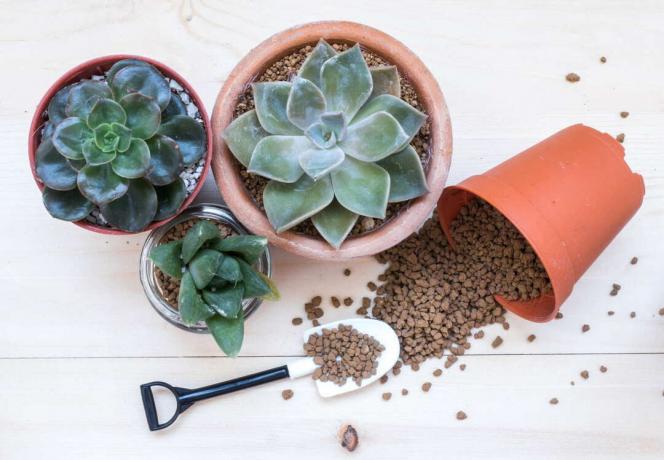
They are among the most popular houseplants and have few environmental requirements - we're talking about succulents. Their modesty makes them the perfect decorative element in their own four walls, even for people without “green fingers”. There is a huge variety of water-storing succulents worldwide, most of which come from the arid regions of the world. Below is everything you need to know about succulents - from biodiversity and care to planting the beautiful survivors.
contents
- Succulents: characteristics
- Succulents: Associated Families and Genera
- Succulent species: the most popular types
- Buy succulents: what should be considered when buying?
- Planting succulents properly
-
Properly caring for succulents
- Watering succulents
- Fertilize succulents
- Repot succulents
- Propagating succulents: offshoots & Co.
Succulents: characteristics
The main peculiarity of succulents is their ability to store more liquid in various plant organs. This usually results in a fleshy tissue that can appear on leaves as well as on the stem or roots. Succulents are not a family or genus (the species are not necessarily related), but a growth habit that is adapted to certain environmental conditions.
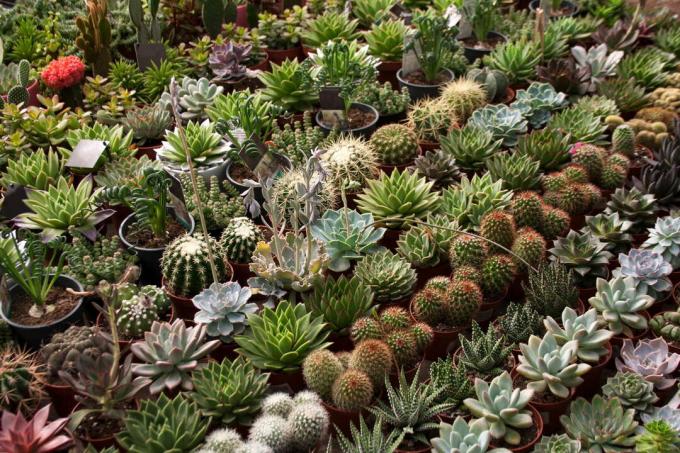
Succulents: Associated Families and Genera
Succulents are common in a large number of plant families and are represented in many species around the world. The more well-known families and genera include:
- Agave family (Agavoideae): Agave, yucca
- Midday flowers (Aizoaceae): Carpobrotus
- Bromeliads (Bromeliaceae): pineapple
- Cactus plants (Cactaceae): Optunia (prickly pear), Carnegiea
- Thick leaf plants (Crassulaceae): Aenoium, Crassula
- Spurge Family (Euphorbiaceae): Euphorbia (milkweed), Jatropha
- Mulberry Family (Moraceae): Ficus, Dorstenia
- Orchids (Orchidaceae): Phalaenopsis
- Saxifrage family (Saxifragaceae): Saxifraga, Bergenia

In addition to these families and genera, there are a huge number of other plants that show succulence.
Identify succulents correctly
Identifying succulents correctly is not always easy as they come in a multitude of types and shapes. To do this, first orientate yourself on the growth habit: Does the succulence appear in the leaves or the trunk? If the plant is in bloom, what are the characteristics of the bloom? In addition to regular plant identification books, there are some specific succulent guides that can help you find an answer. However, the commercially available succulents can often be found under the families mentioned above and can be identified relatively easily.
Succulent species: the most popular types
Succulents are absolutely trendy and in great demand as a houseplant. We present the most popular species and genera:
- Aloe vera: A real classic among the succulents, which are characterized by their thick-fleshed leaves and the desert-like appearance; can be used as a remedy for sunburn.
- Acanthocalycium spiniflorum: Small but prickly cactus. The spherical cactus plant is perfect for growing in pots.
- Disocactus ackermannii: Popular leaf cactus with long-growing shoots; suitable as a hanging plant; also under the name Epiphyllum ackermannii known.
- Echeveria: Includes several species, all of which belong to the thick-leaf family (Crassulaceae) belong; easy-care rosette plant; perfect for the house.
- Gasteries: Popular succulents for indoor culture; small growth and thick leaves.
- Gymnocalycium: Classic, small round cactus; very expansive flower compared to the size of the plant; long spines.
- Opuntia: Prickly pear cacti with sometimes very tall growth; popular for their sweet fruits and their classic appearance.
- Schlumbergera: Also known as the Christmas cactus; bushy growth with thick-fleshed leaves and red to pink flowers.
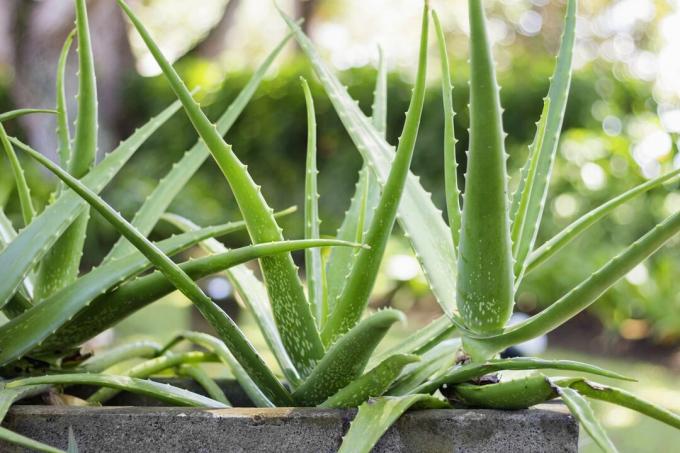
Hardy succulents
In addition to the succulents suitable as house plants, there are also some hardy succulents. These include, for example, several exotic desert plants such as the cactus species Opuntia tortispina and different types of yucca like Yucca filamentosa and Yucca baccata. Another common winter hardy succulent in this country is the magnificent sedum plant Hylotelephium spectabile.
Buy succulents: what should be considered when buying?
You have a huge selection of easy-care succulents, as there are now many specimens to buy everywhere. In general, it is not advisable to buy your succulent from a supermarket or something similar at first, as the quality of the plants is usually not particularly good. You should therefore rather go to a garden center or a nursery; You will usually also get professional advice there. When buying the plant, be sure to look out for yellow spots and pests and only buy healthy seedlings.
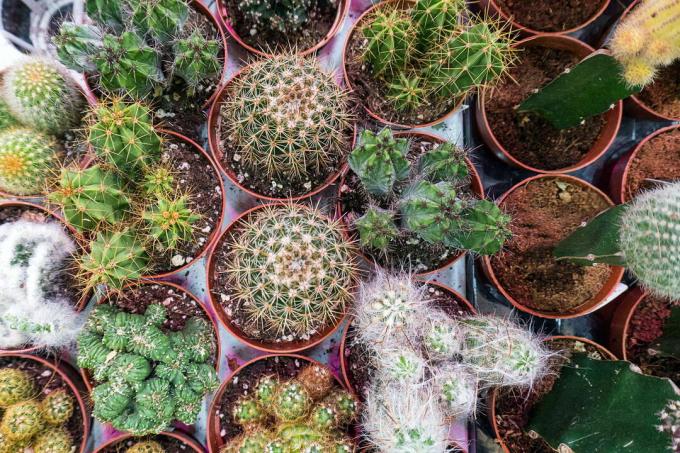
Planting succulents properly
As soon as you have acquired a specimen of the water-storing plants, it should be planted in a larger pot. You can plant hardy succulents directly in the field. The ideal planting time is always spring as the beginning of the growing season, so that rapid rooting can take place. The most important aspect when planting succulents is always choosing the right substrate, which must always be very permeable. In addition to special cactus or succulent soil, peat-free garden soil can also be used. With both variants, a part of sand should always be added to ensure good water drainage.
Properly caring for succulents
Succulents are rightly considered to be particularly easy-care companions, as they often have to defy harsh conditions in their natural range. We show you what you should keep in mind when it comes to care.
Watering succulents
While succulents store water better than most other plants, they too need a little moisture now and then to grow and stay healthy. Lightly water your succulent plant about once a week and always pour the water out of the saucer. Under no circumstances should you water again, because the water-sensitive plant will quickly react with rot. You should reduce the watering amount even further in the winter months.
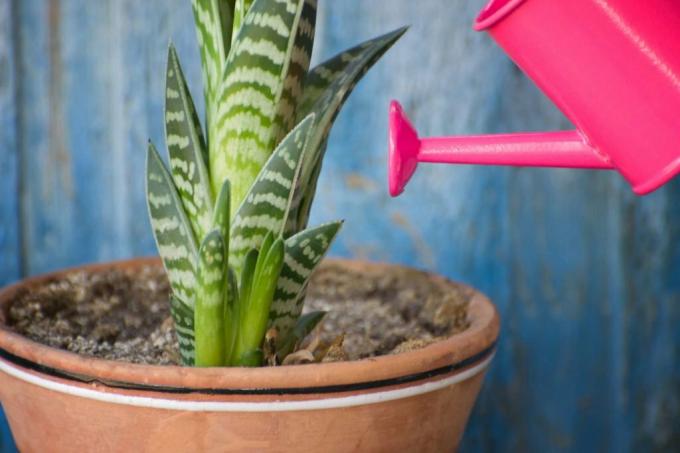
Fertilize succulents
Since succulents are not a single plant family and the growth forms can be very different, it is difficult to give a general fertilization recommendation. You should therefore make fertilization dependent on the strength of the growth: Most succulents only grow a lot slowly and therefore do not need large quantities, whereas more strongly growing species can be fertilized about every three weeks will. Special cactus and succulent fertilizers in organic quality have proven to be a useful means. This is usually characterized by an increased potassium content and is therefore perfect for water-storing plants. However, the following applies: It is generally better to use less than too much fertilizer so that the plant roots do not burn under any circumstances.
Repot succulents
It is important for succulents to free them from their planter every few years and to provide fresh substrate. Depending on the growth, the pot should also be replaced with a larger one at this point - provided the old one has become too small. With the moisture-sensitive succulents, it is always advisable to use a clay pot, which, unlike plastic containers, does not store the water for long. Ideally, start repotting in spring and use only well-drained soil, as with planting. Always ensure good drainage in the new pot through potsherds on the bottom.
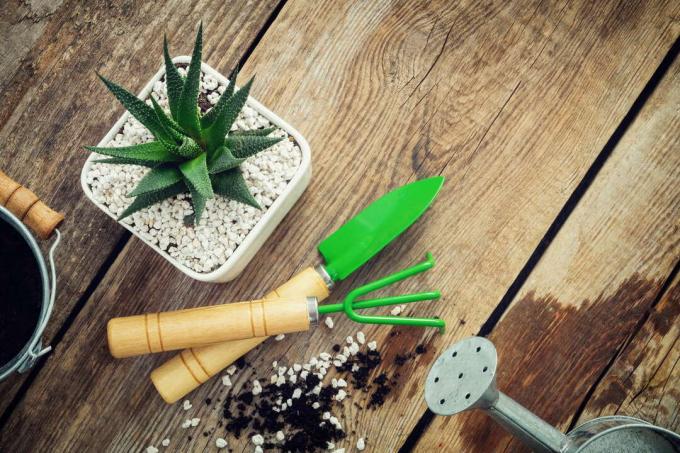
Here are some tips you should keep in mind when properly caring for succulents:
- Water only a little (no more than once a week)
- Drain the coaster
- Fertilization only in the summer half-year every three weeks with organic cactus or succulent fertilizer
- Repot every few years (permeable soil, clay pot with a drainage layer made from potsherds)
Propagating succulents: offshoots & Co.
For those who want to make several out of one succulent without having to buy a new plant straight away, propagating the plant at home is a good idea. Succulents are extremely easy to propagate. Alone for vegetative reproduction There are two methods available to you, depending on the species: cuttings and offshoots (which botanically are actually so-called "Kindel").
- Cuttings: Ideal for succulents with a larger leaf surface. Ideally, cut a healthy leaf from the plant in spring and make another fine cut directly on the leaf edge. When placed on potting soil, the leaf quickly forms new small plants at the interface, which can later be transplanted together with the roots.
- Kindel: Some types of succulents form so-called kindels, which are often also referred to as offshoots. These are small plants that sprout right next to the mother plant. If they are large enough, they can even be cut off and replanted without their own roots.
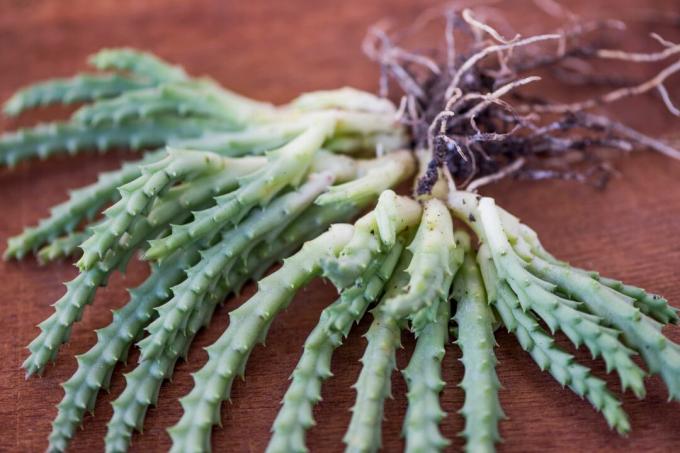
Succulents are a popular decoration in the home. In this article you will find the most beautiful planting ideas for Succulents as decoration.



